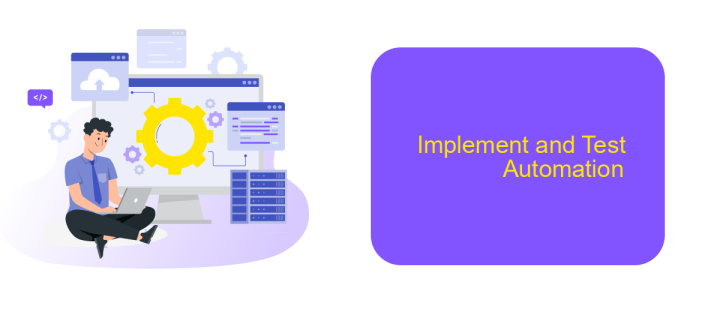Workflow Automation Best Practices
In today's fast-paced business environment, workflow automation has become essential for enhancing efficiency and productivity. By streamlining repetitive tasks and reducing human error, companies can focus on more strategic initiatives. This article explores best practices for implementing workflow automation, ensuring you maximize its benefits while minimizing potential pitfalls. Discover how to optimize your processes and drive your organization toward success.
Establish Clear Business Objectives
Establishing clear business objectives is crucial for the success of any workflow automation project. Clear objectives provide direction and help measure the effectiveness of the implemented solutions. Begin by identifying the key goals you want to achieve through automation, such as reducing operational costs, increasing productivity, or improving customer satisfaction.
- Define specific, measurable, achievable, relevant, and time-bound (SMART) goals.
- Involve stakeholders from various departments to ensure alignment and buy-in.
- Prioritize objectives based on their potential impact and feasibility.
- Utilize tools like ApiX-Drive to streamline integrations and enhance workflow efficiency.
- Regularly review and adjust objectives as needed to stay aligned with business goals.
By setting clear business objectives, you create a roadmap that guides the automation process and ensures that all efforts are focused on achieving desired outcomes. This approach not only enhances the efficiency of your workflows but also maximizes the return on investment for your automation initiatives.
Identify and Map Key Processes

Identifying and mapping key processes is the cornerstone of effective workflow automation. Begin by evaluating your current workflows to pinpoint repetitive and time-consuming tasks. Engage with team members who are directly involved in these processes to gain insights and gather detailed information. This collaborative approach ensures that no critical step is overlooked and helps in accurately documenting the workflow from start to finish.
Once key processes are identified, create a visual map to illustrate each step, decision point, and interaction within the workflow. Tools like flowcharts or process mapping software can be extremely helpful in this regard. Additionally, consider leveraging integration platforms such as ApiX-Drive to seamlessly connect various applications and automate data transfers. By integrating these tools, you can enhance efficiency and reduce manual interventions, ensuring a more streamlined and effective workflow.
Select the Right Automation Tools

Choosing the right automation tools is crucial for the success of your workflow automation initiatives. The right tools can streamline processes, reduce errors, and save time, but selecting the wrong ones can lead to inefficiencies and frustration.
- Identify Your Needs: Understand the specific requirements of your workflow, including the tasks that need automation and the teams involved.
- Evaluate Integration Capabilities: Ensure the tool can seamlessly integrate with your existing systems. Services like ApiX-Drive can facilitate smooth integrations between various applications.
- Scalability: Choose tools that can grow with your business. They should be able to handle increased workload and complexity as your operations expand.
- User-Friendliness: The tool should be easy to use for all team members, regardless of their technical expertise.
- Cost-Effectiveness: Consider the total cost of ownership, including setup, subscription, and maintenance fees.
By carefully evaluating these factors, you can select automation tools that not only meet your current needs but also support your long-term business goals. Remember, the right tool can make all the difference in achieving efficient and effective workflow automation.
Implement and Test Automation

Implementing and testing automation is a crucial step in optimizing your workflow. Begin by identifying repetitive tasks and processes that can benefit from automation. Use tools like ApiX-Drive to integrate various applications and streamline data flow between them, ensuring seamless operation.
Once you've set up the automation, it's essential to thoroughly test each workflow to ensure it performs as expected. Pay attention to edge cases and potential failures to avoid disruptions. Testing should include both functional and performance aspects to guarantee reliability.
- Identify key processes for automation
- Set up integrations using tools like ApiX-Drive
- Test workflows for functionality and performance
- Monitor and adjust as needed
After successful testing, continuously monitor the automated workflows to catch any issues early and make necessary adjustments. Regular updates and maintenance are vital to keep the automation running smoothly and efficiently. Implementing and testing automation not only saves time but also enhances productivity and accuracy.
Monitor and Optimize Automation
To ensure the effectiveness of your workflow automation, it's crucial to continuously monitor and optimize the processes. Regularly review key performance indicators (KPIs) to identify bottlenecks and inefficiencies. Utilize analytics tools to gain insights into how your automation is performing and where improvements can be made. By keeping an eye on these metrics, you can make data-driven decisions to refine your workflows and achieve better results.
One effective way to enhance your automation is by integrating various tools and services. For instance, ApiX-Drive offers seamless integration capabilities, allowing you to connect different applications and streamline your processes. By using such services, you can automate data transfers, reduce manual tasks, and improve overall efficiency. Regularly updating and optimizing these integrations will help maintain a smooth and efficient workflow, enabling your team to focus on higher-value tasks.
FAQ
What is workflow automation?
How can I identify which processes to automate?
What are the best practices for implementing workflow automation?
How do I ensure the security of automated workflows?
Can I integrate different software applications in my automated workflows?
Apix-Drive is a simple and efficient system connector that will help you automate routine tasks and optimize business processes. You can save time and money, direct these resources to more important purposes. Test ApiX-Drive and make sure that this tool will relieve your employees and after 5 minutes of settings your business will start working faster.

